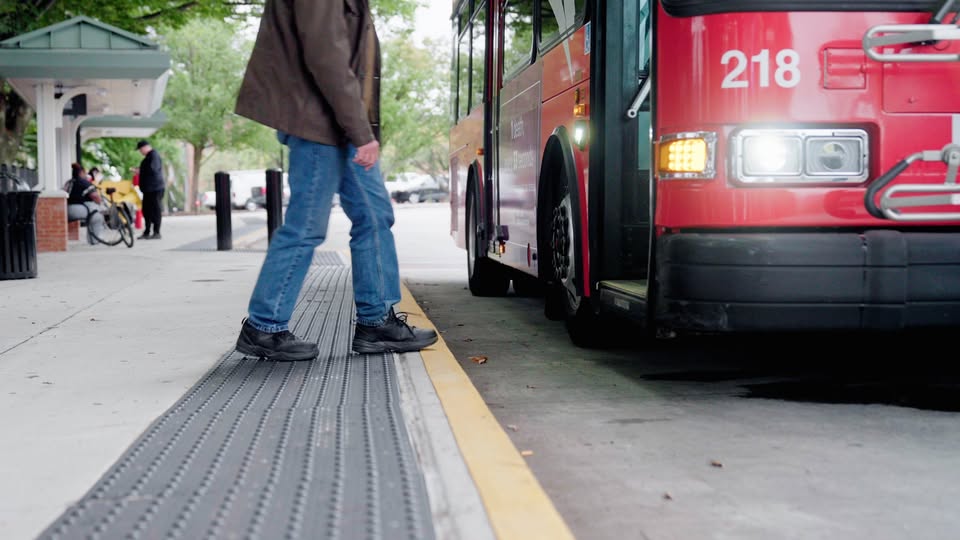For families living in rural towns or on the far edges of suburbia, getting around isn't just about convenience - it's a question of survival. Without access to public transportation, many low-income families are left with only one option: buying a car they can't afford. And for households already struggling to make ends meet, the cost of car ownership can push them further into financial distress. This is where geographic diversity meets transportation inequality.
Geographic Diversity and Why It Matters for Transportation Equity
Geographic diversity refers to the wide range of physical and demographic characteristics that shape how people experience where they live, whether that's in a rural, suburban, or urban area. In turn, where people live is heavily shaped by housing affordability. In the context of infrastructure, geographic diversity helps explain the public transportation inequality and related financial burdens placed on households, particularly when it comes to transportation for low-income households in outer suburban and rural areas.
While residents of dense urban cores often have access to multiple reliable transit options, public transportation in rural areas is all but nonexistent, leaving Americans outside metro areas transit-poor. This lack of public transportation access creates significant economic strain for households already operating on tight budgets, forcing many to rely on personal vehicles even when it's financially unsustainable.
The Reality of Transportation Access Across Geographies
In most of the United States, public transportation infrastructure is designed to serve urban areas, leaving large swaths of rural and outer suburban communities underserved or entirely excluded. As a result, 45% of Americans lack access to public transportation. This isn't just a matter of convenience; it's a reflection of a deeply inequitable system that disproportionately burdens certain populations.
Households in these areas often face geographic penalties, meaning they are forced to pay more for essential services simply because of where they live. For transportation, this means that if there's no bus, train, or shuttle available, owning a car becomes non-negotiable.

Car Ownership as a Financial Necessity, Not a Choice
For low-income households outside major cities, car ownership isn't a luxury; it's a lifeline. But it's an expensive one. Households in poverty own fewer vehicles, take fewer trips, and rely more on carpooling or non-motorized transportation to mitigate transportation costs. Still, they often have no alternative but to buy a car to get to work, school, or health care appointments.
Living in areas with limited or no public transportation effectively forces residents to incur transportation costs that are disproportionate to their income. When you factor in car payments, maintenance, gas, and insurance, the annual cost of owning a vehicle can easily exceed $10,000 - an unsustainable burden for many households already living paycheck to paycheck.
The Commute Gap: Inequities in Time and Cost
Transportation inequity isn't just about whether or not transit is available. It's also about how long it takes to get where you need to go and how much it costs to do so. Black and Latino workers, along with low-income households of other races, tend to have longer and more complicated commutes due to inadequate public transit connections between affordable housing and job centers. Households in these transit deserts often face a triple burden: longer travel times, higher costs, and fewer job opportunities within a reasonable commute.
The Example of York County, Pennsylvania
A transportation study by United Way of York County underscores the real-life impacts of the lack of transportation in rural areas. It found that for many low-income residents in the region, access to transportation is a top barrier to employment, education, and health care.

Transportation Infrastructure Investment Falls Short
Despite growing recognition of the need to modernize transit networks, investment hasn't kept up with demand, especially outside urban hubs. The nation's public transit systems face a significant funding backlog in addressing maintenance and expansion needs. And even when new projects are funded, they often prioritize high-density areas over outer suburbs and rural towns.
This investment gap further entrenches geographic inequality. When funds are directed toward cities that already have multiple transit options, communities with the least access continue to fall further behind.
A Call for Transportation Equity
Addressing these disparities requires intentional policies that consider geographic diversity. Models for equity-based transportation planning can begin by identifying priority equity geographies and directing resources to where the gaps are greatest. The goal isn't just to add buses or build rail lines; it's to close the opportunity gap created by decades of disinvestment in suburban and rural mobility.
Geographic diversity is a fact of life in the United States, but access to reliable, affordable transportation shouldn't depend on your zip code. Households living outside of urban centers, especially those with limited incomes, deserve transit options that don't force them into debt or isolation. But there's good news. If you're one of these families, you can get assistance with transportation and much more by contacting United Way of York County.
Get Your Life Moving in the Right Direction With United Way of York County
United Way of York County in Pennsylvania assists hardworking households on their journey toward financial stability. To meet the needs of the asset limited, income constrained, employed (ALICE) population, we are embarking on an issue-focused strategy to create a transformational impact for workers. We are focusing on two key barriers: childcare and transportation.
We offer many other resources through PA 211, a free, confidential health and human services information and referral hotline. Learn how to use PA 211 to access resources such as food, clothing, financial help, and mental health assistance. Contact us today to get the services you need for a financially successful future!
With one donation, you can help your ALICE neighbors and friends. Gifts to the United Way of York County Impact Fund are dollars that stay in York County and impact lives where you live and work. Please consider giving today!
